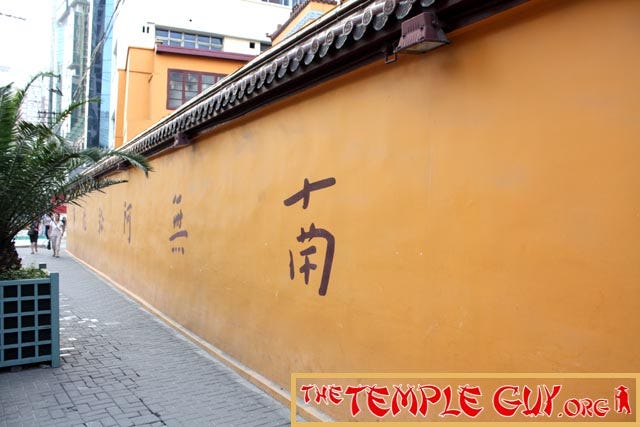When is a temple not a temple? When it's an office building in the parking lot of a hotel! You'll see what I mean when we visit the Yuanming Lecture Hall in this episode of--
TEMPLE TALES!
From lovely Longhua Temple, I took a bus back to People's Square, and then a train along Shanghai Metro Line 2 past "my" stop (where my hotel was located) to Jiangsu Road Station, just a 15-minute walk from my last destination for the day: the Yuanming Jiangtang, or "Complete Understanding" Lecture Hall.
The Yuanming Lecture Hall's street frontage
About that name: Yuan is typically "circle" and related words (circular, round, spherical, etc.). It can also indicate the fullness of the moon, or Chinese currency's shape. In the English sense of "rounding out," it can mean "to make consistent and whole." That's the sense we'll choose here. Ming (which was also the name of a dynasty) can mean "bright" or "clear," but often also means "to understand" (among many other things). So in the context of a center for studying Buddhism, let's say the name means "to round out the understanding." (A Chinese website glosses it "understanding in ten directions"--a distinction without a difference, methinks.) But we'll stick with the Chinese word Yuanming which, as usual, is more succinct.



